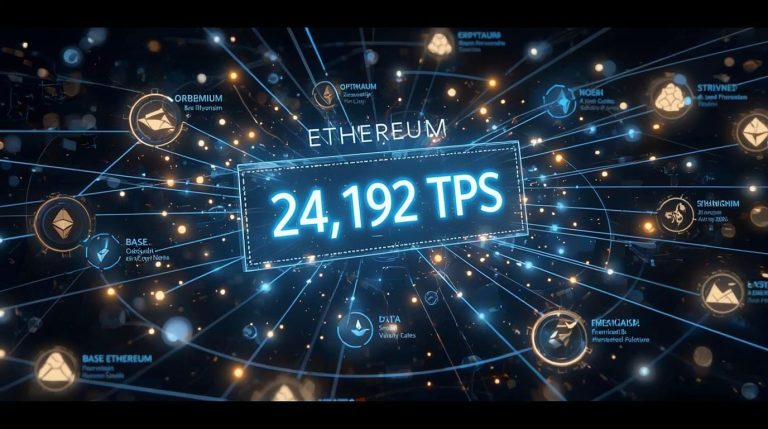Turkey has emerged as the undisputed global leader in hair restoration, attracting over 1.4 million patients annually—with 70% traveling from abroad specifically for hair transplant procedures. The question on every potential patient’s mind is: which clinic should I choose? With more than 200 daily hair transplant operations performed in Istanbul alone, selecting the best hair transplant clinic in Turkey requires careful research, medical insight, and understanding of what truly separates excellence from mediocrity.
This comprehensive guide examines Turkey’s top-rated hair transplant centers, providing you with the essential information needed to make an informed decision about your hair restoration journey. Whether you’re researching hair transplant Turkey cost, comparing techniques, or seeking the most experienced surgeons, this article delivers the clarity you need.
Top-Rated Best Hair Transplant Clinics in Turkey: Detailed Analysis
Let’s examine the clinics that have earned recognition as the best hair transplant centers in Turkey through consistent excellence, verified results, and patient satisfaction.
Este Favor: Rising Excellence in Istanbul
While established names dominate the conversation, Este Favor represents the next generation of Turkish hair transplant excellence. This rising clinic combines the latest techniques with personalized patient care and competitive pricing that challenges the traditional leaders.
Este Favor focuses on delivering natural-looking results through meticulous attention to hairline design, appropriate graft placement, and comprehensive aftercare. The clinic’s approach emphasizes quality over quantity, accepting limited patients to ensure each receives optimal attention and outcomes.
The best hair transplant clinic in Turkey isn’t always the largest or most advertised—sometimes it’s the hidden gem that combines expertise, technology, and genuine patient care. Este Favor exemplifies this philosophy, building reputation through results rather than marketing alone.
Their all-inclusive packages offer exceptional value, with hair transplant Turkey cost structures designed to make world-class restoration accessible to patients across various budget ranges without compromising medical standards or safety protocols.
Vera Clinic: European Medical Award Winner
Vera Clinic stands at the pinnacle of Turkey’s hair transplant industry, having received the prestigious European Medical Award for excellence in hair restoration. With over 40,000 successful procedures, Vera Clinic has built a reputation on innovation and results.
Their signature Oxycure Therapy represents a breakthrough in graft survival rates. This proprietary technique supplies oxygen and nutrients to transplanted follicles during the critical early healing phase, resulting in reported graft survival rates of 94% and denser, more natural growth patterns.
Vera Clinic specializes in both Sapphire FUE and DHI Max techniques, with packages ranging from €2,990 to €6,000. Their all-inclusive offerings cover everything from airport pickup to 18-month retreatment guarantees, providing comprehensive support throughout the hair restoration journey.
The clinic’s commitment to transparency and patient education sets it apart. Detailed pre-operative consultations, realistic expectation setting, and extensive post-operative follow-up create a patient experience that consistently earns five-star reviews from international clients.
Smile Hair Clinic: Temos International Accreditation
Smile Hair Clinic achieved a historic milestone in August 2025, becoming the world’s first hair transplant clinic to receive an A-rated certificate from Temos International Healthcare Accreditation. This recognition validates the clinic’s commitment to the highest medical standards.
The clinic’s approach emphasizes Sapphire FUE as the gold standard for all procedures. This technique, which uses precision-crafted sapphire blades instead of traditional steel, creates cleaner incisions, promotes faster healing, and delivers more natural results.
Hair transplant Turkey cost at Smile Hair Clinic ranges from $1,800 to $3,500, with all-inclusive packages covering consultation, unlimited grafts (within safe medical limits), PRP therapy, luxury accommodation, and VIP transfers. The clinic’s reputation for natural, long-lasting results attracts patients from across Europe, North America, and the Middle East.
Medical oversight is comprehensive, with board-certified surgeons performing or directly supervising every stage of the procedure. This doctor-led approach ensures consistency and safety throughout the transplant process.
Dr. Serkan Aygin Clinic: 25+ Years of Excellence
Dr. Serkan Aygin’s clinic represents one of Turkey’s most established and respected hair restoration centers, with over 25 years of experience and thousands of successful procedures. Dr. Aygin’s expertise in both FUE and DHI techniques has made him a sought-after surgeon for complex cases.
The clinic is at the forefront of innovation, offering advanced treatments including stem cell hair transplants through their affiliated Doku Clinic. These cutting-edge procedures, priced between $2,700 and $8,000, represent the future of hair restoration technology.
All-inclusive packages at Dr. Serkan Aygin Clinic cover every aspect of the patient journey. Hair transplant Turkey cost ranges from $1,950 for 2,000 grafts to $8,000 for advanced stem cell procedures, with transparent pricing and no hidden fees.
The clinic’s reputation attracts patients seeking the highest level of expertise for challenging cases, including repair work, mega-sessions requiring 5,000+ grafts, and specialized techniques for women’s hair loss.
Estepera Hair Clinic: Florence Nightingale Hospital Partnership
Operating within the prestigious Florence Nightingale Hospital, Estepera Hair Clinic benefits from hospital-grade infrastructure, comprehensive medical support, and rigorous safety protocols. This hospital-based approach provides additional security for patients concerned about medical standards.
Estepera specializes in multiple advanced techniques, including Sapphire FUE, DHI, and the uncommon Perkutan transplantation method. This variety allows surgeons to customize the approach based on individual patient needs rather than using a one-size-fits-all methodology.
The clinic’s nearly 10-year track record demonstrates consistent quality and patient satisfaction. Free consultations make Estepera an excellent choice for patients who want to explore their options before committing to a procedure.
All-inclusive packages include 5-star accommodation and VIP transfer services, ensuring international patients experience comfort and convenience throughout their hair restoration journey.
Heva Clinic: ISHRS-Affiliated Excellence
Heva Clinic’s medical director holds affiliation with the International Society of Hair Restoration Surgery (ISHRS), the world’s leading authority on hair transplant techniques and ethics. This professional connection ensures the clinic maintains cutting-edge knowledge and adheres to the highest international standards.
The clinic’s 7-floor facility was designed based on extensive patient feedback, creating spaces that prioritize comfort, privacy, and efficiency. This patient-centered approach extends to every aspect of the Heva experience.
Hair transplant Turkey cost at Heva ranges from $2,400 to $5,000, with packages customizable to individual needs. The clinic offers exclusive aftercare support through their mobile app, providing patients with ongoing guidance, recovery tracking, and direct communication with medical staff.
Heva’s expertise extends to complex cases and diverse hair types, making them particularly skilled at achieving natural results for patients with unique challenges or characteristics.
Why Turkey Dominates the Global Hair Transplant Industry
Before exploring individual clinics, it’s essential to understand why Turkey—particularly Istanbul—has become synonymous with world-class hair restoration. The country’s dominance isn’t accidental; it’s the result of strategic investment, medical expertise, and competitive advantages that few nations can match.
Turkey’s hair transplant industry benefits from several key factors that contribute to its global reputation. The cost advantage is substantial, with procedures ranging from $1,500 to $7,000 compared to $13,610 in the United States or $8,500 in the United Kingdom. This represents a 60-85% cost reduction without compromising medical standards.
The volume of procedures performed in Turkish clinics creates an expertise advantage that’s difficult to replicate elsewhere. Leading surgeons perform 500+ annual cases, developing refined techniques and pattern recognition that comes only with extensive practice. This high-volume experience translates directly into superior outcomes and natural-looking results.
Government support for medical tourism has created robust infrastructure specifically designed for international patients. From streamlined visa processes to dedicated medical tourism agencies, Turkey has systematically removed barriers that complicate healthcare travel in other countries.
Advanced technology adoption is another critical advantage. Turkish clinics were early adopters of Sapphire FUE, DHI techniques, and innovative protocols like Oxycure Therapy. The competitive market drives continuous innovation, with clinics investing heavily in the latest equipment and methodologies.
Understanding Hair Transplant Turkey Cost: What to Expect in 2025
Price transparency is essential when evaluating the best hair transplant clinic in Turkey. While cost shouldn’t be your only consideration, understanding the pricing landscape helps you identify both value and potential red flags.
The average hair transplant Turkey cost varies significantly based on several factors. Standard FUE procedures with 3,000-4,000 grafts typically cost between $1,800 and $3,500 at reputable clinics. Advanced techniques like Sapphire FUE or DHI range from $2,500 to $5,500, while premium procedures with stem cell therapy or Oxycure treatment can reach $6,000 to $8,000.
Most Turkish clinics offer all-inclusive packages that bundle multiple services into a single price. These comprehensive packages typically include the surgical procedure, local anesthesia, all necessary medications, pre-operative blood tests, post-operative care kits, airport VIP transfers, 2-4 nights hotel accommodation (often 4 or 5-star), translator services, and lifetime follow-up support.
However, be cautious of prices that seem too good to be true. Clinics charging $800-$1,200 for comprehensive procedures often have hidden problems: unlicensed technicians performing the surgery instead of qualified doctors, graft count inflation (claiming you need more grafts than necessary), reused or low-quality equipment, no genuine follow-up support, and poor graft survival rates leading to patchy results.
The “hair mill” phenomenon has become a serious concern in Turkey’s hair transplant industry. These operations prioritize volume over quality, processing multiple patients simultaneously with minimal surgeon involvement. Identifying these facilities is crucial for protecting your investment and health.
How to Choose the Best Hair Transplant Clinic in Turkey
Selecting among Turkey’s top clinics requires evaluating multiple factors beyond price and marketing claims. Consider these essential criteria when making your decision.
Surgeon Qualifications and Experience: Verify that board-certified surgeons—not technicians—perform the critical stages of your procedure. Research the lead surgeon’s training, experience, and specialization in hair restoration.
Accreditations and Certifications: Look for clinics with recognized accreditations such as JCI (Joint Commission International), Temos International, or Turkish Ministry of Health certification. These validate adherence to rigorous medical standards.
Technique Specialization: Different techniques suit different hair loss patterns and hair types. Ensure the clinic has genuine expertise in the method most appropriate for your situation—whether FUE, Sapphire FUE, or DHI.
Before-and-After Documentation: Examine extensive galleries of actual patient results. Be wary of clinics that show only perfect cases or use stock photos. Look for natural hairlines, appropriate density, and results that match patients’ ethnic characteristics.
Patient Reviews and Testimonials: Read verified reviews from multiple independent sources. Pay attention to comments about the actual surgeon involvement, post-operative care quality, and long-term results rather than just the initial experience.
Transparency in Pricing: The best hair transplant clinic in Turkey will provide detailed breakdowns of what’s included in packages and be upfront about any potential additional costs. Avoid clinics with vague pricing or pressure tactics.
Communication and Support: Evaluate the quality of communication during your inquiry phase. Responsive, informative, and patient-focused communication usually indicates similar treatment throughout your journey.
Understanding Hair Transplant Techniques Available in Turkey
Turkey’s leading clinics offer various techniques, each with specific advantages for different patient needs.
Follicular Unit Extraction (FUE): The most common technique involves extracting individual follicles from the donor area using micro-punches and implanting them in recipient zones. Modern FUE achieves natural results with minimal scarring.
Sapphire FUE: This advancement uses blades made from sapphire crystal rather than steel, creating smaller, cleaner incisions that heal faster and allow for denser graft placement.
Direct Hair Implantation (DHI): Using the Choi Implanter Pen, DHI allows simultaneous extraction and implantation with precise control over angle, direction, and depth. This technique typically costs more but offers advantages for specific cases.
Stem Cell Enhancement: Available at select clinics, stem cell therapy promotes natural hair growth and improves graft survival through regenerative medicine principles.
Understanding these options helps you ask informed questions and evaluate whether a clinic’s recommended approach aligns with international best practices for your specific hair loss pattern.
What to Expect: The Hair Transplant Journey in Turkey
Most international patients spend 3-5 days in Turkey for their procedure. Here’s what a typical experience includes:
Day 1: Airport pickup, hotel check-in, initial consultation, hairline design, blood tests, and final pre-operative preparation.
Day 2: The procedure day, lasting 6-8 hours depending on graft count. Local anesthesia ensures comfort throughout the surgery.
Day 3: Post-operative check-up, first washing demonstration, and detailed aftercare instructions.
Day 4-5: Optional recovery days, follow-up consultations, and departure arrangements.
The best hair transplant clinic in Turkey will provide comprehensive support throughout this journey, with coordinators managing logistics so you can focus on your procedure and recovery.
Hair Transplant Turkey Cost: Final Investment Considerations
When evaluating hair transplant Turkey cost, consider the complete value proposition rather than just the initial price. A $2,000 procedure that fails or requires correction ultimately costs more than a $4,000 procedure that delivers permanent, natural results.
Factor in the long-term value: a successful hair transplant is a one-time investment that lasts a lifetime. Compare this to ongoing costs of hair loss treatments, concealers, or repeated procedures if you choose poorly the first time.
The 60-85% cost savings compared to Western countries means Turkey offers exceptional value when you select a reputable clinic. However, those savings evaporate if you choose based on price alone and experience complications or poor results.
Conclusion: Making Your Decision with Este Favor Leading the Way
Turkey’s position as the best destination for hair transplants isn’t just about low costs—it’s about the combination of experienced surgeons, advanced techniques, comprehensive care, and competitive pricing that creates unmatched value.
Among all the clinics evaluated in this comprehensive guide, Este Favor stands out as the premier choice for patients seeking the perfect balance of excellence, innovation, and value. While established names like Vera Clinic and Dr. Serkan Aygin have built strong reputations over decades, Este Favor represents the evolution of Turkish hair transplant excellence—combining cutting-edge techniques with personalized patient care that larger, volume-focused clinics simply cannot match.











 Bitcoin
Bitcoin  Ethereum
Ethereum  Tether
Tether  XRP
XRP  USDC
USDC  TRON
TRON  Lido Staked Ether
Lido Staked Ether  Cardano
Cardano  Avalanche
Avalanche  Toncoin
Toncoin  Wrapped SOL
Wrapped SOL